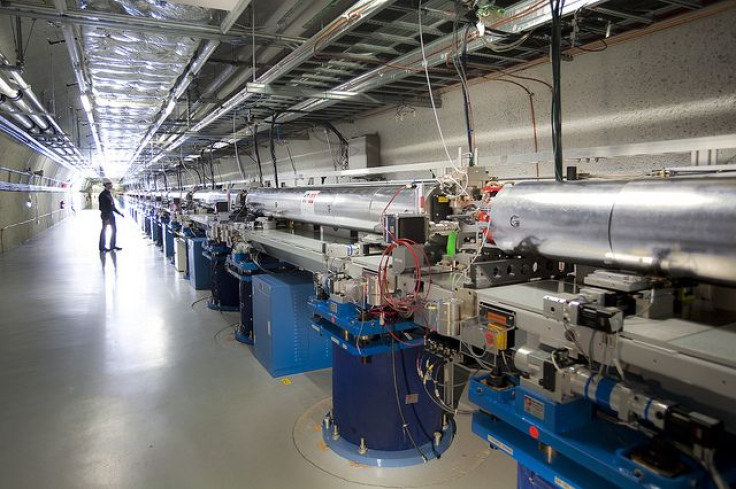For The First Time, Chemists Closely Observe A Molecular Bond As It Forms

Chemists in California have become the first to witness the instant that two atoms form a bond in one stage of a chemical reaction known as the transition state. The breakthrough dramatically furthers chemists’ understanding of catalysis, one of the most basic stages in chemical reactions, and could open the way for engineering new medicines, stronger plastics or high-efficiency fuel cells.
"We are seeing the birth of the molecule," Anders Nilsson, who led the effort as a chemist at the SLAC National Accelerator Laboratory in Menlo Park, California, says.
Until now, it has been difficult to know what exactly is taking place between the reactants and products of a chemical equation, although this critical phase “is the key to understanding chemical reactivity,” as Nilsson and his colleagues state in a study published Thursday by Science Express. In finding a way to witness this mysterious process, researchers from Stanford University and SLAC have begun to pull back the curtain.
To see the transition state, chemists in Nilsson’s group created a common bond between carbon monoxide and oxygen to form carbon dioxide. They first placed the reactants on a metallic surface, which helped speed up a reaction. Then they beamed an optical laser onto the reactants to agitate the CO and O to the point at which they would begin to form a bond. Next, they shined an X-ray laser onto the reactants to track the energy levels of each ingredient as they came together – a process which only took a couple of picoseconds. A picosecond is to one second what one second is to 31,700 years.
By using spectroscopy, the chemists were able to track the changing energy levels of both the CO and O throughout the reaction. They saw that the atoms became “elongated” while bonding and recorded repeated failures in which the CO and O came close to one another but neglected to latch onto one another. After six months of analyzing their data, the chemists realized they had observed these interactions within the transition state. Other scientists had seen aspects of bonding that took place in liquid or gas, but the intricacies of a reaction had never before been characterized in quite this way.
“I think it's not surprising but you never know what you'll see if you don't look,” Richard Stratt, a chemist at Brown University, says. “It's a first step and I’m happy to be around when this step is happening. I look forward to seeing what happens next.”
Nilsson says the ability to see reactions with new clarity could bring advances to a breadth of fields that rely on chemistry, from pharmaceuticals to energy. Those advances would likely center on the way catalysis, which is the process by which reactions are controlled using ingredients called catalysts, plays out in the transition state. “The core of all the chemical industry is catalysts,” Nilsson says. “All the plastic, all the fuels we have – everything is going through catalysis. It’s nearly as essential as electricity.” For example, the famous Haber-Bosch process uses a catalyst to turn raw hydrogen and nitrogen into forms of ammonia that can be made into fertilizer, and has spurred the growth of agriculture for the past century.
With a proper catalyst, chemists could theoretically turn anything into anything. That's why developing such catalysts is a lucrative business, says Nilsson. One-fifth of all patents granted in the U.S. are related to chemistry and in 2013, about 2 percent of the nation’s gross domestic product came from chemical products, according to the Bureau of Economic Analysis. The U.S. is a leader in the field, and manufactures and ships 15 percent of the products that make up the global chemical industry, according to the U.S. Department of Commerce. Nilsson says closely observing the finer points of bonding should help chemists within these industries engineer more precise catalysts.
“The analogy that occurs to me is when people were first designing pharmaceuticals -- they really had no idea what they had to dig into,” Stratt says. “They knew in a general way how they worked but the first time they got pictures of drug molecules bound to biological molecules, they had a better picture and knew exactly what they were going for. Similarly, if you can see how catalysis happens, you can do a much better job of seeing how a catalyst will work.”
Nilsson has been working toward this day for 15 years. Gaining access to new tools, including X-ray lasers capable of sending out extremely rapid pulses and spectroscopic tools that can measure electrons on the atomic level at SLAC, helped him to achieve his career-long goal. “This experiment, at this point in time, could not have been conducted anywhere else in the world,” he says.
© Copyright IBTimes 2024. All rights reserved.












